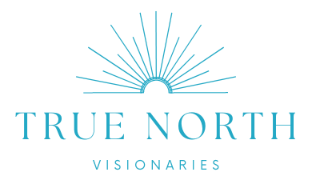Your company Vision must be…
Inspiring and motivating
Realistic and strategically sound
What is a Company Vision Statement?
A company Vision is a statement that defines the desired future state of an organization and its aspirations for growth, impact, and definition of success. It provides a clear direction for the company and serves as a filter for all future decision-making and strategic planning. A Vision statement should be inspiring, aspirational, and strategically sound, and it should encapsulate the values, culture, and purpose of the company.
A Vision statement is different from a Mission statement. A mission statement is exactly that; it’s the ideal world that your solution is aiming to solve – which means it likely is aspirational, and may never be “fulfilled” in a way that permanently solves the need. The Vision, on the other hand, outlines the company's ideal future state and what success looks like for it.
A company's Vision statement should be unique to the company and reflect its specific goals and aspirations, but it should also be relevant and meaningful to employees, customers, partners, and other stakeholders. A clear view of the future can drive the success of an organization by providing a shared sense of purpose and direction. And finding opportunities to live that Vision right away within your company is essential.
Examples of Company Vision Statements:
We asked DigitalWill.com to explain their Vision & Mission and why they’re inspiring to the team:
DigitalWill.com's Vision is “to be the go-to solution for all of your essential end-of-life services.”
This differs from their mission, which is "eliminating the need for high-priced attorneys in the estate planning industry."
What makes it motivating?
Art Shaikh, founder and CEO of DigitalWill.com explains: “After losing my father unexpectedly, I learned how difficult it was to navigate end-of-life issues, especially with regard to digital assets. From my years in the tech industry, I knew there needed to be a modern solution to this problem that everyone faces. So I launched a death tech company.
Many on my team have experienced the same problems. Expensive funeral planning, difficulty navigating the execution of a will, and other issues. Because we are making the process simpler and more equitable on a global scale, it is a calling for all team members to be a part of the journey.”
How to write it
Typically, I host a 2-day workshop to facilitate the following processes with frameworks and guidance.
Define your company's purpose and values. What does your company stand for? What are its core values and beliefs? This will serve as the foundation for your Vision statement.
Look to the future. Imagine where you want your company to be in 10 or 20 years. What impact do you want it to have on the world? What success would you like it to achieve?
Get input from stakeholders. Involve employees, customers, partners, and other stakeholders in the process of creating your vision statement. Ask for their thoughts on what they want the company to stand for and achieve in the future.
Craft a statement. Once you have a clear understanding of your company's purpose, values, and aspirations, you can begin crafting your Vision statement. Keep it concise, memorable, and inspiring. Avoid naming specific people, buzzwords, and creating something that’s not strategically sound.
Review and refine. Share your draft Vision statement with your team and other stakeholders and ask for feedback. This step requires applying a lens to the Vision that enables you to see what’s not actually aligning with your company values. Revise it as needed to ensure it is meaningful and accurately reflects your company's aspirations.
Communicate it. Once your Vision statement is finalized, make sure it is communicated widely and consistently throughout the organization. Weave it into places where it can genuinely be integrated into the culture, like a cool graphic poster for the office.
Use it. Use it as a guide for decision-making, and ensure that your company's activities and initiatives align with it.
A good vision statement should be a guiding light for the organization, inspiring employees, and aligning the company's goals and objectives towards a common purpose.
Get more tangible advice (in podcast format) for writing your Company Vision statement
I was so excited to spend an hour with my dear friend and fellow Visionary, Jill Felska, Founder of Want to Work There, to talk about how to write an impactful Vision statement for companies on the Want to Work There podcast.
Great companies have a strong Vision statement, full stop. There is a huge difference between a good company with a strategic plan, and a great company with an inspiring, motivating, ambitious and loyalty-engendering Vision, plus the strategic Roadmap to get there.
I’m sharing everything I know about how Visionary leaders create great companies.
I recommend downloading Jill’s free Minimum Viable Vision Guide before diving in.
In this episode you’ll learn:
Why you should ditch the stiff, one-sentence vision statement - and what to replace it with instead
The 3 crucial pillars to include in your company Vision.
How to make sure your Vision is motivating and inspiring, but NOT a fantasy.
Which stakeholders to involve in the process and how to get maximum buy-in.
Why a clear Vision is such an important tool for decision-making.


